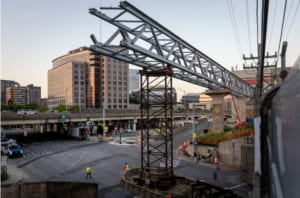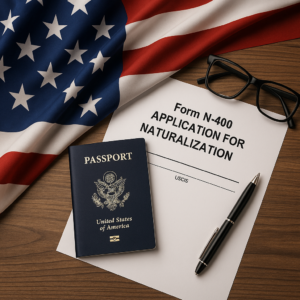For many people who are immigrating to the United States, the Department of State (“DOS”) Visa Bulletin is the most important document to watch each month. The Visa Bulletin helps immigrant visa applicants understand their place in line for a visa. Although checking the Visa Bulletin is an essential step in understanding an applicant’s place in line, many people do not understand how the bulletin works or why priority dates change.
When an applicant’s priority date moves backwards (retrogresses) in the Visa Bulletin, the cut-off date for a specific immigrant visa category or country has moved backwards in time, as opposed to the usual progression forward. Retrogression can occur when there is a higher demand for immigrant visas in that particular category or country than the number of visas available for that specific month or period of time than was originally predicted by the Department of State.
For example, the final action date for the F-2A visa category (Family-sponsored preference category for spouses and unmarried children of Permanent Residents) was September 8, 2020 in the July 2023 Visa Bulletin. However, in the August 2023 Visa Bulletin, the date retrogressed to October 8, 2017. This means that immigrant visa applicants with a priority date before October 8, 2017 are eligible for an immigrant visa while those with a priority date after October 8, 2017 will have to wait until an immigrant visa becomes available again.
Retrogression typically occurs toward the end of the fiscal year as immigrant visa issuance approaches the annual category or per-country limitations for the year. Once the new fiscal year begins on October 1, a new supply of immigrant visas becomes available and the dates usually return to where they were before retrogression.
Applicants whose priority dates no longer meet the current cut-off date published in the Visa Bulletin due to retrogression will have their cases put on hold until an immigrant visa becomes available.
Applicants who filed their Form I-485 Applications with the United States Citizenship and Immigration Services before their immigrant visa availability retrogressed may still be eligible for employment authorization and permission to travel outside the United States while waiting for their visa priority date to become current again.
If you have questions about your visa status or authorizations, contact us at info@enterlinepartners.com and speak with a U.S. immigration attorney in Ho Chi Minh City, Manila, and Taipei.
ENTERLINE & PARTNERS CONSULTING
Ho Chi Minh City, Vietnam Office
Suite 601, 6th Floor, Saigon Tower
29 Le Duan Street
Ben Nghe Ward, District 1
Ho Chi Minh City, Vietnam
Tel: +84 933 301 488
Email: info@enterlinepartners.com
Facebook: Enterline & Partners – Dịch vụ Thị thực và Định cư Hoa Kỳ
YouTube: @EnterlineAndPartnersConsulting
Website: http://enterlinepartners.com
Manila, Philippines Office
Tel: +63 917 543 7926
Email: info@enterlinepartners.com
Facebook: Enterline and Partners Philippines
Website: https://enterlinepartners.com/language/en/welcome/
Copyright 2023. This article is for information purposes only and does not constitute legal advice. This article may be changed with or without notice. The opinions expressed in this article are those of Enterline and Partners only.




